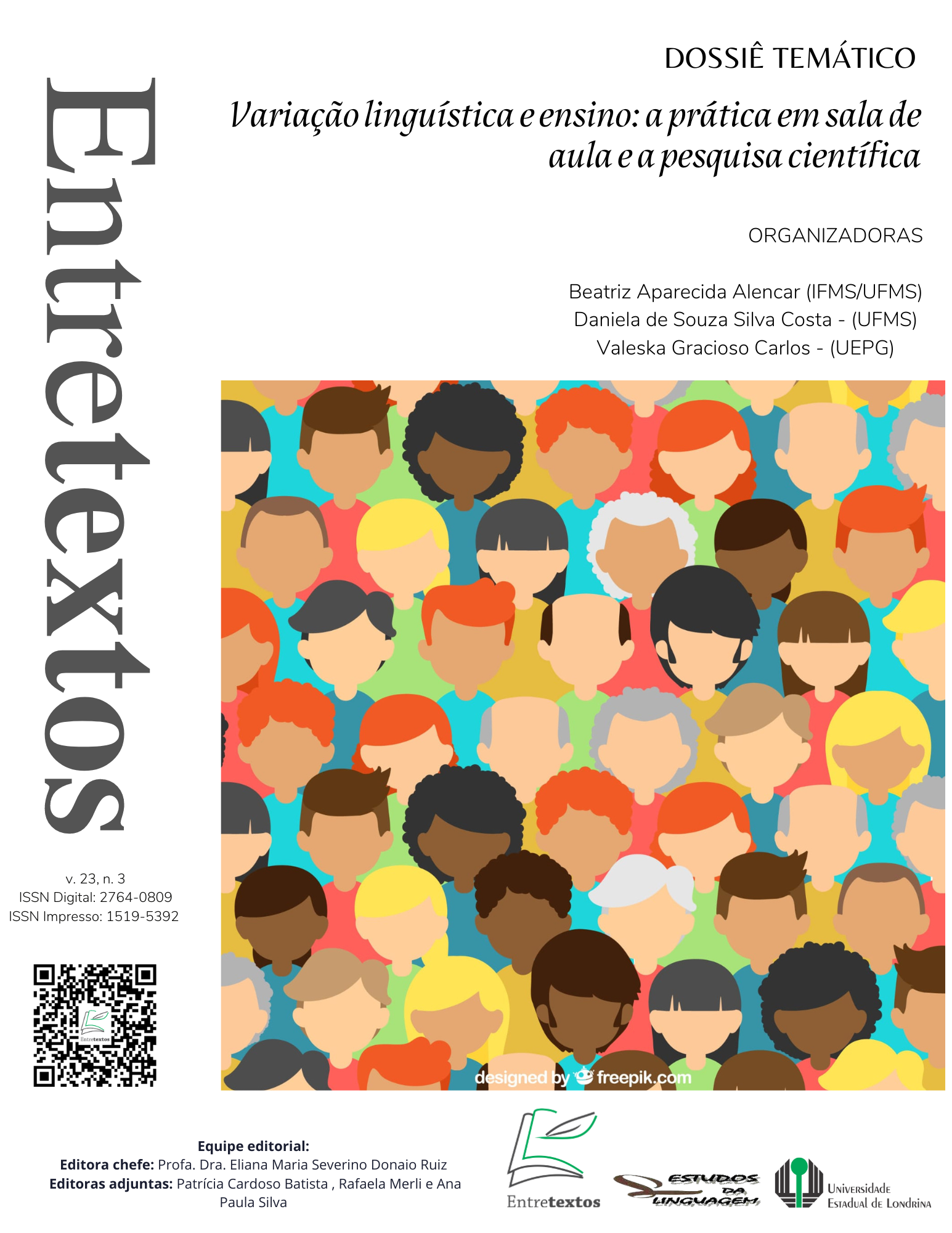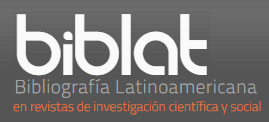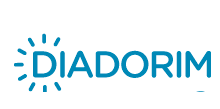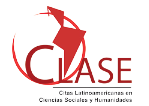Linguistic variation in the ENEM: an analysis of the notebooks from 2017 to 2023
DOI:
https://doi.org/10.5433/1519-5392.2023v23n3p70-95Keywords:
Enem, Linguistic variation, LanguageAbstract
Language can be conditioned by internal factors, in its phonetic, lexical, morphological, syntactic, phonological, discursive and semantic system, and by external factors, such as: sex or gender, education level, age group, social class, ethnicity, region , orality and writing. Therefore, the school space can function as a place of socialization, which respects linguistic differences, and which recognizes heterogeneity as an intrinsic factor in language, especially at the end of high school, the stage in which students will take the National High School Exam (ENEM). This perception contributes to the reduction of linguistic prejudice, as the real use of the language goes beyond the concepts imposed by Normative Grammar. Furthermore, addressing this topic at school and in national exams contributes to the recognition of the plurality of uses of the language, in addition to corroborating the fact that it is used in different ways in different contexts and for different purposes. This ranges from more formal situations, such as academic writing, to informal everyday interactions. Therefore, this work aimed to analyze the treatment given to linguistic variation in the ENEM language test in the years 2017 to 2023. As a methodological procedure, bibliographic and documentary research was used. As a result, it was observed that geographic, historical and diamesic variation are the most used, however, the test still offers a shallow discussion about variation, not delving into topics such as linguistic prejudice, for example.
Downloads
References
ALKMIM, T. M. Sociolinguística. In: MUSSALIM, Fernanda; BENTES, Anna C. Introdução à linguística: domínios e fronteiras (Org.). São Paulo: Cortez, 2004.
ANTUNES, I. Aula de português: encontro e interação. São Paulo: Parábola Editorial, 2003.
BAGNO, M. Preconceito linguístico: o que é, como se faz. 49. ed. São Paulo: Edições Loyola, 2007.
BORTONI RICARDO, S M. Manual de Sociolinguística. São Paulo: Contexto, 2014.
BORTONI-RICARDO, S. M. Nós chegemu na escola, e agora? Sociolingüística e educação. São Paulo: Parábola Editorial, 2005.
BRASIL. Estatuto da Criança e do Adolescente: Lei federal nº 8069, de 13 de julho de 1990. Rio de Janeiro: Imprensa Oficial, 2002.
BRASIL. Constituição da República Federativa do Brasil de 1988. Brasília, DF: Presidente da República, [2016]. Disponível em: http://www.planalto.gov.br/ccivil_03/constituicao/constituicao.htm Acesso em 24 dez. 2023.
BRASIL. Lei de Diretrizes e Bases da Educação Nacional, LDB. 9394/1996.
BRASIL. Ministério da Educação: Secretaria de Educação Básica. Orientações Curriculares para o Ensino Médio: Ciências humanas e suas tecnologias. Volume 3. Brasília, 2006.
BRASIL. Lei n.13.005, de 25 de junho de 2014. Aprova o Plano Nacional de Educação - PNE e dá outras providências. Diário Oficial da União, Brasília, DF., 26 jun 2014.
BRASIL. Ministério da Educação e Desporto. Secretaria De Educação Fundamental. Parâmetros Curriculares Nacionais: Documento Introdutório. Brasília: MEC, 1997.
BRASIL. Ministério da Educação. Base Nacional Comum Curricular. Brasília, 2018.
BRIGHT, W. Sociolinguística. Mouton: The Hague, 1966.
CALVET, L. J. Sociolinguística: uma introdução crítica. Tradução Marcos Marcionilo. São Paulo: Parábola, 2002.
LABOV, W. Padrões sociolinguísticos. Trad. Marcos Bagno. São Paulo: Parábola, 2008.
LAKATOS, E. M. Metodologia do Trabalho Científico. 8. ed. São Paulo: Atlas, 2017.
LUCCHESI, D. Sistema, mudança e linguagem: um percurso na história da linguística moderna. São Paulo: Parábola, 2004.
MARTINET, A. Économie des changements phonétiques. Berna: Francke, 1955.
PRETI, D. Sociolinguística: os níveis de fala - um estudo sociolinguístico do diálogo na literatura brasileira. São Paulo: USP, 2000.
RECH, E. O tratamento da variação linguística nos gêneros discursivos da prova de língua portuguesa (linguagens, códigos e suas tecnologias) do Enem (1998-2018) à luz da sociolinguística variacionista e educacional. Dissertação de mestrado apresentado à Universidade Federal da Fronteira Sul, Campus Chapecó/SC. 2020.
TARALLO, F. A pesquisa sociolinguística. São Paulo: Ática, 1997.
TRAVAGLIA, Luiz Carlos. Gramática e interação: uma proposta para o ensino de gramática no ensino de 1º e 2º graus. 14. ed. São Paulo: Cortez, 2009.
VIEIRA, S. (org.). Três eixos para o ensino de gramática. In: VIEIRA, S. (org.). Gramática, variação e ensino: diagnose e propostas pedagógicas. São Paulo: Blucher, 2018a.
VIEIRA, F. E. A gramática tradicional: história crítica. São Paulo: Parábola Editorial, 2018b.
Downloads
Published
How to Cite
Issue
Section
License
Copyright (c) 2024 Marli Ferreira de Carvalho Damasceno, Marcus Antonio de Sousa Filho, José Ribamar Lopes Batista Júnior [Ribas Ninja]

This work is licensed under a Creative Commons Attribution 4.0 International License.
Entretextos adota a Licença Creative Commons Attribution 4.0 International, portanto, os direitos autorais relativos aos artigos publicados são do/s autor/es.
Sob essa licença é possível: Compartilhar - copiar e redistribuir o material em qualquer suporte ou formato. Adaptar - remixar, transformar, e criar a partir do material, atribuindo o devido crédito e prover um link para a licença e indicar se mudanças foram feitas.
























